Japanese cuisine is one of the most varied and exquisite in the world. One of the first things that stands out when you visit the country is that the dishes we’re used to seeing in Japanese restaurants in the West don’t always match what people actually eat there on a daily basis. It’s true that in recent years there has been a deeper appreciation for the versatility of Japanese food, and we’ve gone beyond the standard sushi, sashimi, and nigiri trays — but there’s still a certain lack of knowledge about all the regional specialties Japan has to offer. Below, you’ll find a few notes on Japanese gastronomy and the different regional options you’ll encounter on your trip.

Hokkaidō and Tōhoku
In the north of Japan, where the climate is colder and harsher, the cuisine adapts with hearty dishes. In Hokkaidō, the famous Sapporo miso ramen (札幌味噌ラーメン) stands out with its rich, comforting broth, along with grilled lamb jingisukan (ジンギスカン), and an extraordinary variety of seafood such as crab, sea urchin, and salmon. The region also features uncommon products in the rest of the country, like milk, butter, and cheese. Dairy products, like meat, were not widely consumed in Japan before the Meiji period due to Buddhist influence and the limited availability of dairy livestock. However, in Hokkaidō—where the climate and terrain are more suited to livestock farming—dairy production developed more intensely, and today this region is Japan’s leading producer of milk and dairy products.
In Tōhoku, mountain flavors are typical, with dishes like kiritanpo (きりたんぽ) from Akita—grilled rice cakes usually served in a hot nabe-style stew—miso soups with seafood, and preparations that include fermented rice. In Sendai, the capital of Miyagi Prefecture, gyūtan (牛タン), or grilled beef tongue, is very popular and has become a local symbol. In Yamagata, notable dishes include imoni (芋煮), a hearty stew of taro root, meat, and vegetables, and dango (団子), glutinous rice balls with different sauces, found throughout many prefectures in various flavors and textures. Aomori offers unique specialties like ika-meshi (いか飯), squid stuffed with sticky rice, and senbei-jiru (せんべい汁), a traditional soup made with rice crackers simmered in broth. From Iwate, we highlight the noodles of Morioka, the prefectural capital, which are prepared in three distinct styles and are known as the Morioka sandai men (盛岡三大麺).
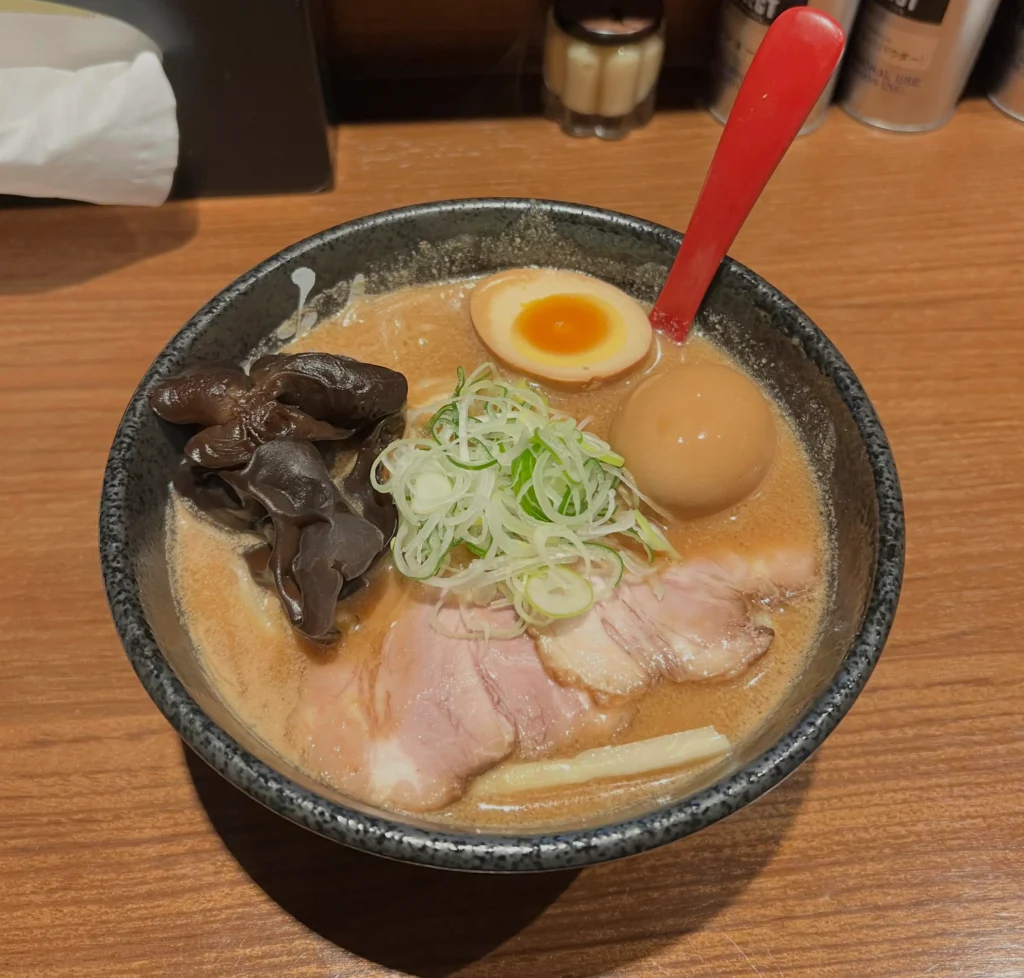

Kantō and Chūbu
The cuisine of central Japan is a blend of urban sophistication and bold flavors. In Tokyo, this mix of tradition and modernity is especially evident. One of the most representative dishes is Edomae sushi (江戸前寿司), made with fresh fish and vinegar-seasoned rice, originally developed as fast food for workers. While the capital offers cuisine from all over Japan and every type of ramen, the most characteristic of the region is shōyu ramen (醤油ラーメン), a soy sauce-based variety that is lighter and saltier than those from Kyūshū or Hokkaidō. A must-do experience in Tokyo is eating (and drinking) at an izakaya, a traditional Japanese tavern, where you can enjoy a lively atmosphere and try a variety of dishes. Also worth mentioning in the Kantō region are the gyōza from Utsunomiya (宇都宮餃子), in Tochigi, considered some of the best in the country, with a lighter profile thanks to their well-balanced vegetable filling.
The Chūbu region offers a rich culinary diversity that reflects both its mountainous areas and coastal zones. In Nagoya, Aichi, standouts include miso katsu (味噌カツ), a breaded pork cutlet topped with rich red miso sauce; tebasaki (手羽先), crispy peppered chicken wings; and hitsumabushi (ひつまぶし), grilled eel served over rice in a style unique to the region. In Yamanashi, one of the most iconic dishes is hōtō (ほうとう), a hearty stew with thick flat noodles, pumpkin, and vegetables. Along the coast in Shizuoka, sakana no himono (魚の干物)—sun-dried, salted fish—is a popular delicacy, especially appreciated at Japanese breakfasts for its concentrated flavor. Finally, Kanazawa, the capital of Ishikawa, is known for Kaga ryōri (加賀料理), a local take on kaiseki cuisine that emphasizes seasonal ingredients and fresh seafood.

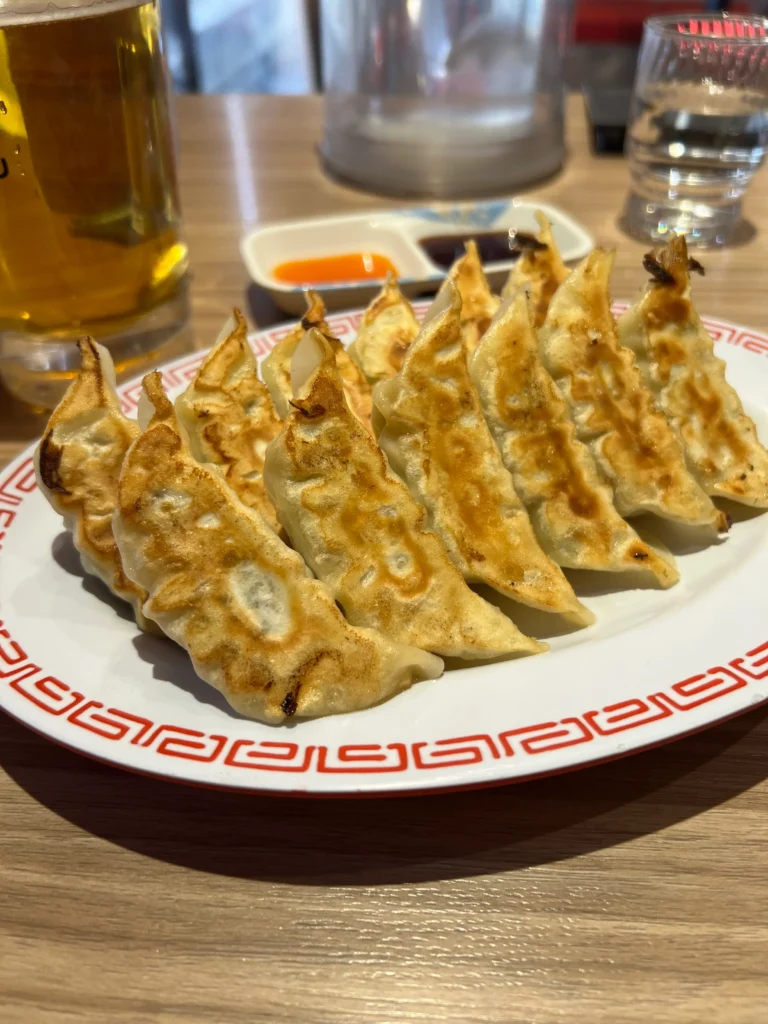
Kansai
The Kansai region is one of the richest areas in Japan in terms of culinary variety and tradition. In Kyoto, kaiseki ryōri (懐石料理) stands out—a form of Japanese haute cuisine that originated as a complement to the tea ceremony and is now the highest expression of seasonality, aesthetics, and balance on the Japanese table. Kaiseki consists of multiple small dishes carefully prepared and presented, using fresh, local ingredients. In Kyoto, it’s also common to enjoy yudōfu (湯豆腐), a simple dish of boiled tofu, and tsukemono (漬物), traditional Japanese pickles.
Osaka is famous for its vibrant street food scene, including takoyaki (たこ焼き), octopus-filled batter balls, okonomiyaki (お好み焼き), a kind of savory Japanese pancake cooked on a griddle, and kushikatsu (串カツ), skewered and deep-fried delicacies. In Hyōgo, Kobe is world-renowned for its luxurious beef, though it’s true that excellent wagyū (和牛) can be found throughout much of the Kansai area. Further south, in Wakayama, mehari-zushi (めはり寿司) stands out—rice balls wrapped in pickled mustard leaves, a traditional dish of the mountainous regions like the Kumano Kodo.
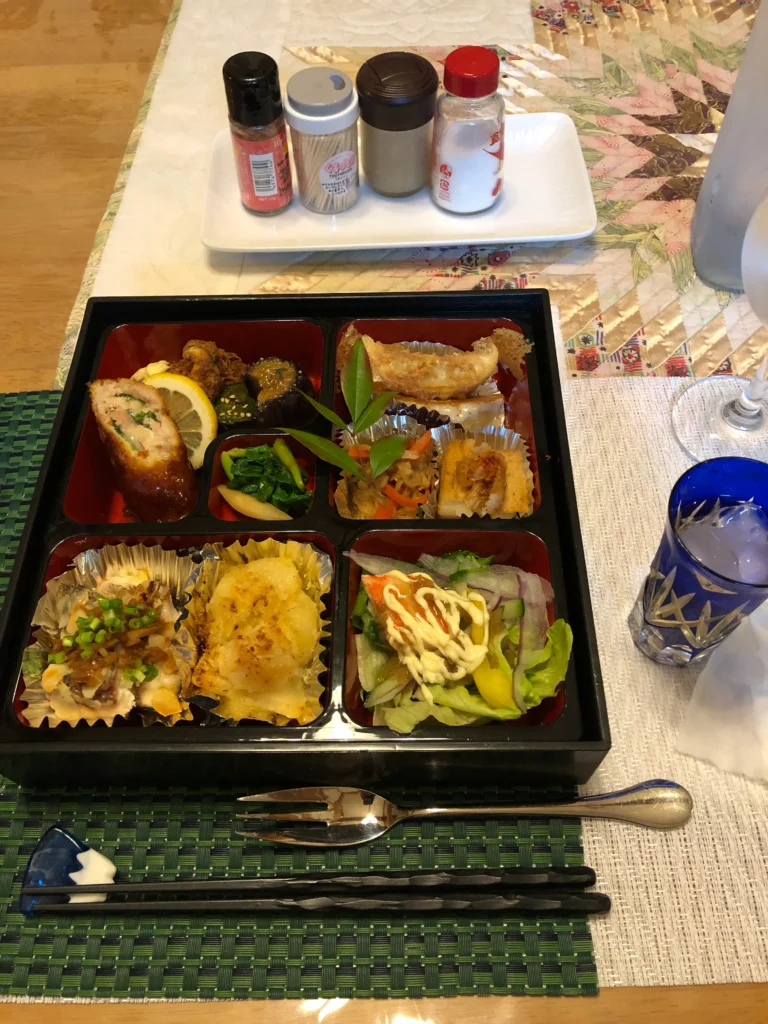

Chūgoku and Shikoku
We group these two major southern regions of Japan together due to their rich, bold-flavored cuisines, featuring spicier or more heavily marinated dishes. In Hiroshima Prefecture, located in the Chūgoku region, one of the most iconic dishes is Hiroshima-style okonomiyaki (広島風お好み焼き). Unlike the Osaka version, where all ingredients are mixed before cooking, the Hiroshima style is known for layering the ingredients separately and then assembling them. The region is also famous for its oysters, farmed in Hiroshima Bay and considered some of the best in the country. If you visit Miyajima, don’t miss the chance to try anago meshi (穴子飯), sea eel over rice, and momiji manju (もみじ饅頭), maple-leaf-shaped sweets that are a symbol of the island.
In Shikoku, the cuisine stands out for its simple yet distinctive dishes such as Sanuki udon (讃岐うどん) from Kagawa, known for its firm and elastic texture, or katsuo no tataki (鰹のタタキ) from Kōchi, lightly seared bonito served with garlic, onion, and ponzu sauce. In Ehime and Tokushima, the highlights are their citrus fruits, especially the exquisite mikan (みかん), the sweet and exclusive setoka (せとか), and the unique sudachi (すだち), a small green citrus widely used as a seasoning to add a fresh, tangy touch to fish, noodles, or meat.
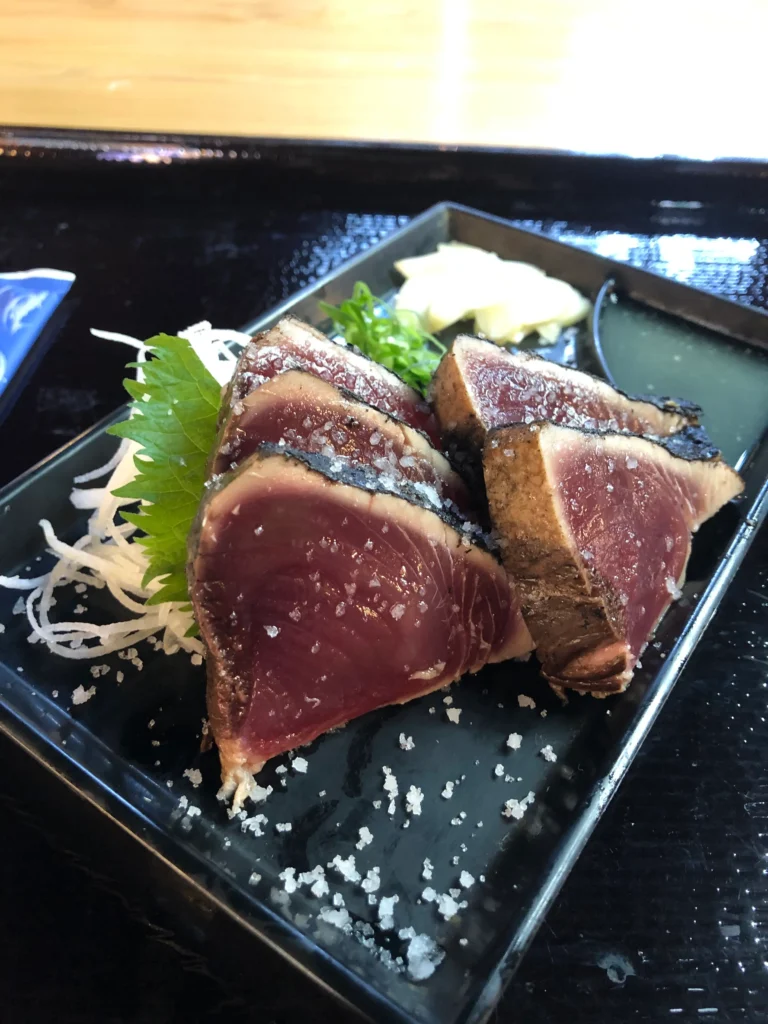
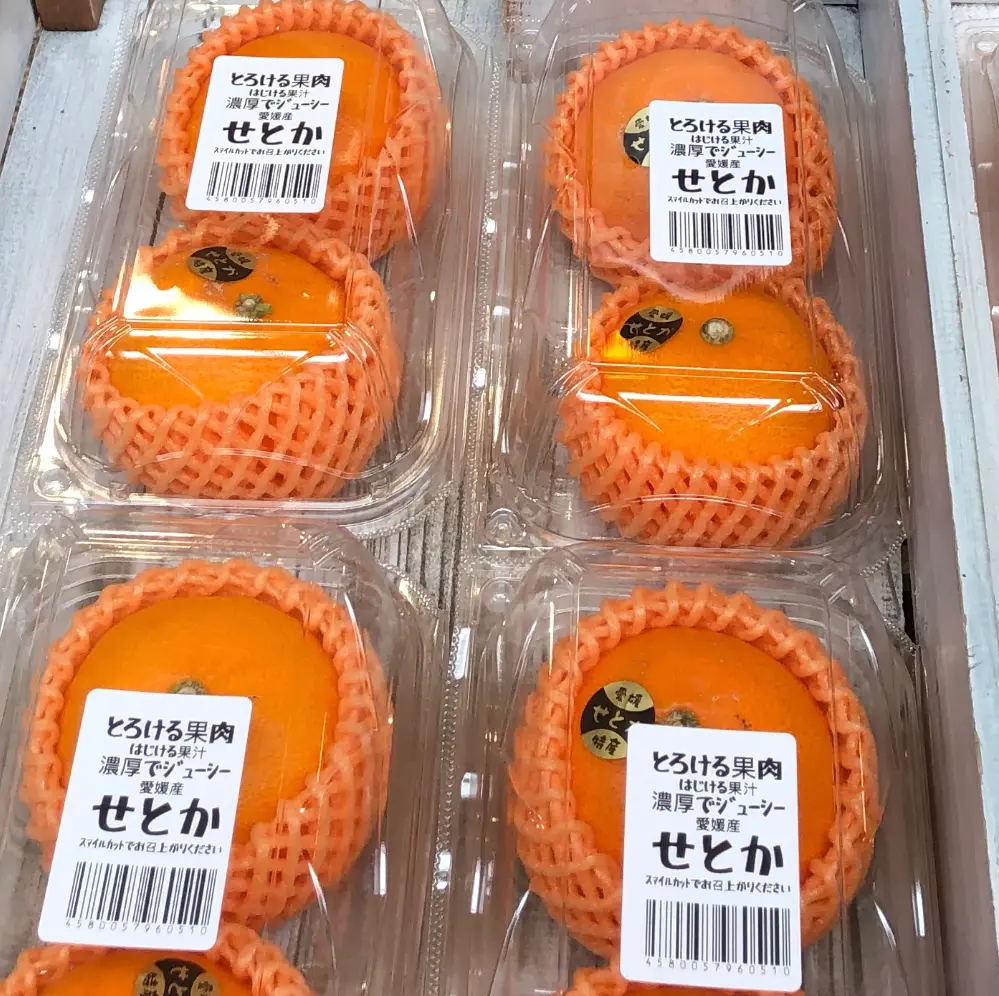
Kyūshū and Okinawa
Kyūshū is perhaps the region where you’ll encounter the boldest flavors in Japanese cuisine. For many, the birthplace of ramen is Hakata, in Fukuoka. Its tonkotsu ramen (豚骨ラーメン) is considered one of the top three in the country, alongside those from Sapporo and Kitakata. In the city’s yatai (street food stalls), you can enjoy this rich ramen, as well as a wide variety of chicken yakitori, tempura, and gyoza. We highly recommend visiting the Nakasu yatai area, which, although often crowded with both locals and tourists, offers a full experience to sample several of Fukuoka’s most iconic dishes.
In the prefectures of Ōita and Miyazaki, highlights include tempura-style chicken dishes such as toriten (とり天) and the locally raised Miyazaki Jitokko (宮崎地鶏). Kumamoto is known for basashi (馬刺し), raw horse meat served sashimi-style, and karashi renkon (辛子蓮根), lotus root stuffed with miso and mustard paste. Further south in Kagoshima, the star ingredient is kurobuta (黒豚), the local black pork, prepared in a variety of ways including tonkatsu and shabu-shabu. This prefecture is also famed for its coveted spirit, shōchū (焼酎), and if you travel to Yakushima, don’t miss the chance to try the island’s specialty: flying fish ramen.
Okinawa has a cuisine influenced by China, Southeast Asian countries, and the United States. The former Ryūkyū Kingdom is known for the tropical nature of its dishes, with goya, a bitter melon, being a common ingredient in many preparations. Goya champuru (ゴーヤチャンプルー), a stir-fry of this melon with tofu, egg, pork, and bean sprouts, is perhaps the most famous dish. On the Yaeyama Islands, Yaeyama soba (八重山そば), a type of noodle with a clear broth and kamaboko toppings, is popular. In Kumejima, umibudō (海ぶどう), a crunchy seaweed shaped like grapes, is served fresh with ponzu sauce. Another representative dish is taco rice (タコライス), a mix of seasoned meat in the Mexican style with rice, created during the U.S. military presence.
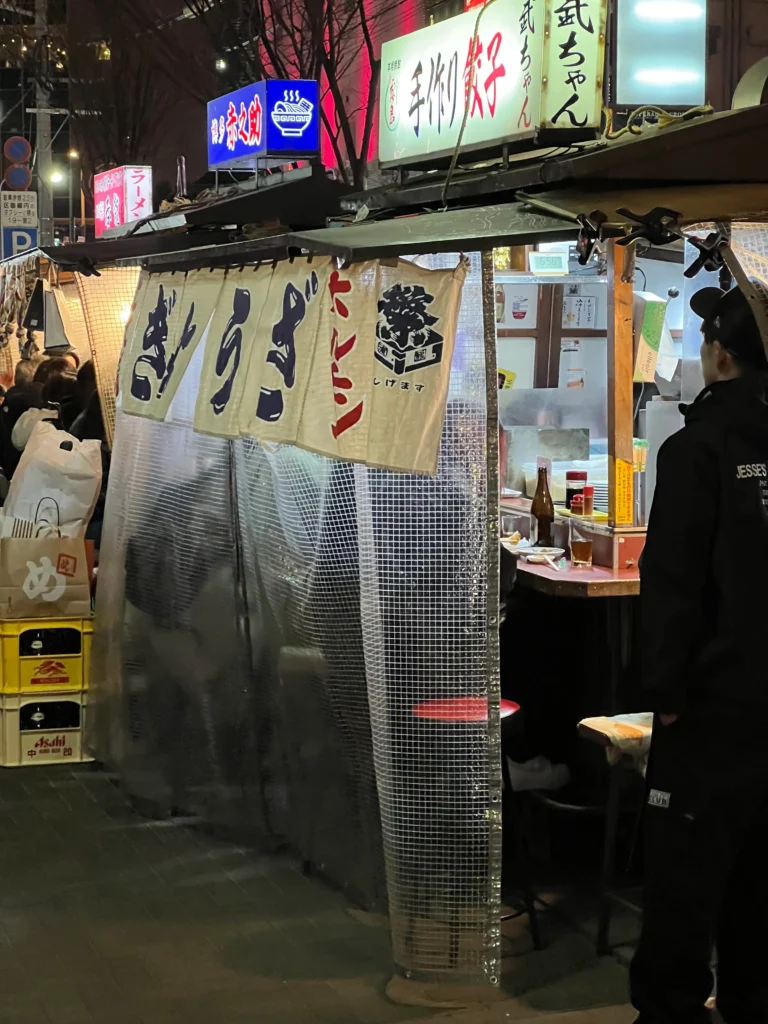
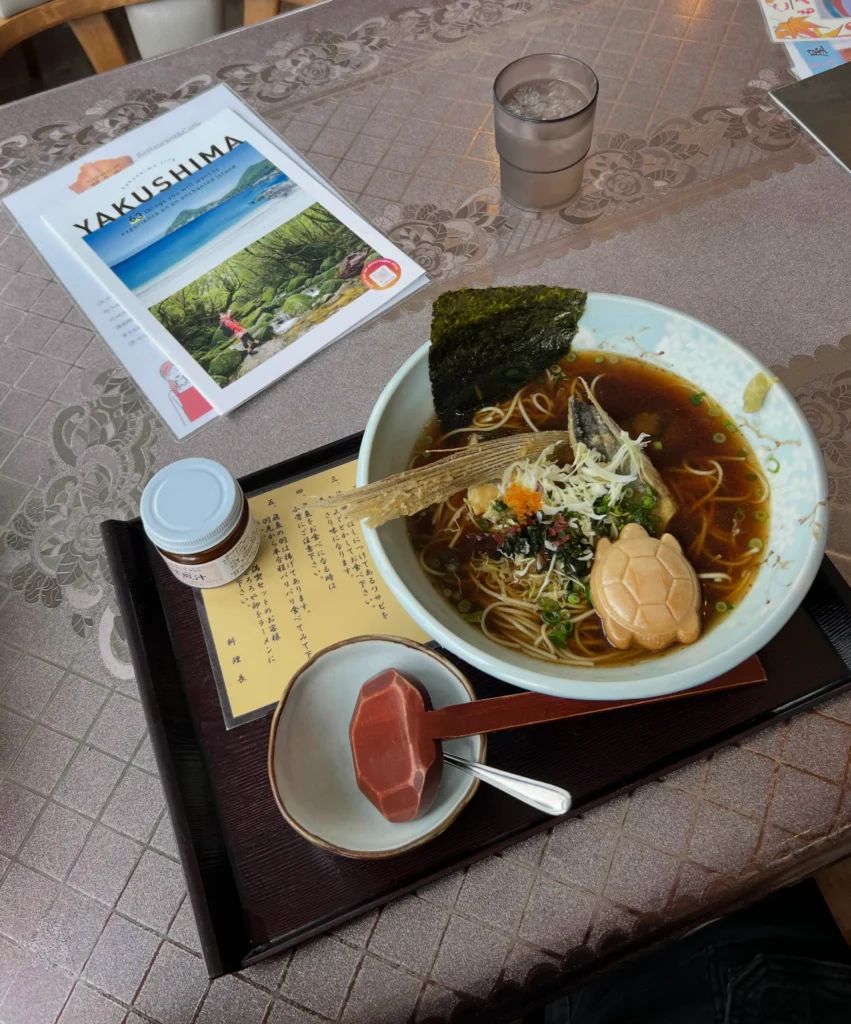
As you can see, the diversity of Japanese cuisine is vast, and we have likely only scratched the surface of some of its dishes. Eating in Japan is an experience in itself and, in many ways, a reason enough to visit this spectacular country. Do you want to travel to Japan and discover a diverse, flavorful, and endless cuisine? Contact us, and we will design the perfect experience for an unforgettable trip.